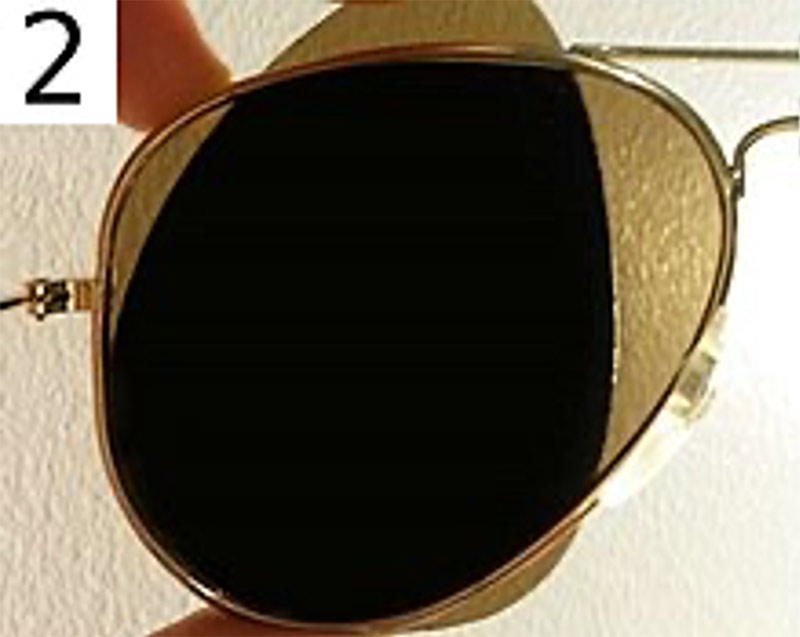By Kai Rands, ABO-AC, NCLEC

As opticians, we often test lens polarization by rotating one lens in front of the other. We leverage polarized lenses to filter out horizontal linearly polarized light that reflects off roads or bodies of water creating glare. Many animals, such as bats, seem to use the orientation of polarized light for navigational purposes. Researchers have found that, like bats, humans may have the capability to detect the orientation of polarized light. And this capability lies right within our own eyes.
As early as the late 1800s, the scientist Wilhelm Haidinger described crossed yellow and blue propeller-shaped images, now referred to as Haidinger brushes, which some people can see when looking into polarized light. The images appear briefly and then disappear due to visual adaptation. Viewers can often prolong the appearance of the images by tilting their heads back and forth to counteract adaptation. A research team led by Shelby Temple in the United Kingdom reported that the degree of polarization threshold at which viewers could perceive Haidinger brushes varied from as low as 23% polarization to 87% polarization. Reasons may include the extent of training in attending to Haidinger brushes and variations in corneal stromal structure.
Similar to the way perception of color depends on the presence of photoreceptors, perception of Haidinger brushes depends on the presence of particular structures in the human eye. Temple and colleagues explained that the carotenoid pigments that give the macula its characteristic yellow appearance–such as lutein–tend to orient perpendicularly to the Henle fibers. The Henle fibers consist of the axons of foveal photoreceptors. These axons are elongated and orient radially from the fovea centralis. The carotenoids and Henle fibers form a structure that converts linearly polarized light into radially polarized light. The result is the perception of Haidinger brushes.
The connection between perceiving Haidinger brushes and arrangement of macular pigments suggests that disruptions to pigment arrangement may affect Haidinger brush perception. Phillip Müller and colleagues in Germany showed associations between the ability to perceive Haidinger brushes and macular pigment density in those with macular disease. This suggests that eye care professionals may be able to use a Haidinger brush perception task (along with other measures) to screen for macular disease. To date, Haidinger brush perception tasks have not been broadly used for macular disease screening because of the high percentage of false-positive results. In April of 2023, an international group of optometrists, quantum computing researchers, chemists, physicists, and vision researchers teamed together, led by Connor Kapahi, to develop a technique designed to lead to fewer false-positive results in screening for early macular disease. The researchers explained that this technique uses structured light, which can produce special types of polarized states not possible with other types of light. By converting individuals’ responses into an image projected onto a typical fundus image, the researchers made comparisons among participants’ perceptual sensitivity to polarized light. Further research is needed to determine whether eye care professionals can use this technique effectively as a screening tool for macular disease.
References:
Greif, S., Borissov, I., Yovel, Y., & Holland, R. A. (2014). A functional role of the sky’s polarization pattern for orientation in the greater mouse-eared bat. Nature communications, 5(1), 4488.
Kapahi, C., Silva, A. E., Cory, D. G., Kulmaganbetov, M., Mungalsingh, M., Pushin, D. A., Singh, R., Thompson, B., & Sarenac, D. (2023). Measuring the visual angle of polarization-related entoptic phenomena using structured light. arXiv preprint arXiv:2304.12941.
Müller, P. L., Müller, S., Gliem, M., Küpper, K., Holz, F. G., Harmening, W. M., & Issa, P. C. (2016). Perception of Haidinger brushes in macular disease depends on macular pigment density and visual acuity. Investigative ophthalmology & visual science, 57(3), 1448-1456.
Temple, S., McGregor J., Miles, C., Graham, L., Miller, J., Buck, J., Scott-Samuel, N., Roberts, N. (2015). Perceiving polarization with the naked eye: characterization of human polarization sensitivity. Proceedings of the Royal Society Biological Sci,ences 282.












